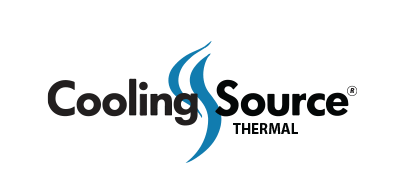 When it comes to designing eco-friendly heat sinks, the primary focus should be on improving energy efficiency and minimizing environmental impact. Here are some key considerations and design strategies for creating eco-friendly heat sinks:
When it comes to designing eco-friendly heat sinks, the primary focus should be on improving energy efficiency and minimizing environmental impact. Here are some key considerations and design strategies for creating eco-friendly heat sinks:
- Material Selection: Opt for materials with a low environmental footprint. Look for options with high thermal conductivity and low embodied energy. Materials such as aluminum, copper, and their alloys are commonly used due to their excellent thermal properties and recyclability.
- Fin Design: The fin geometry plays a crucial role in heat dissipation. Utilize optimized fin shapes and spacing to enhance heat transfer efficiency. Fin arrangements like pin fins or microchannels can provide better heat dissipation while reducing material usage.
- Surface Coatings: Apply eco-friendly surface coatings that minimize corrosion and enhance heat transfer. Look for environmentally friendly coating options that don’t contain harmful substances like heavy metals or volatile organic compounds (VOCs).
- Heat Pipe Technology: Consider incorporating heat pipes into the heat sink design. Heat pipes use phase-change principles to transport heat more efficiently, reducing the overall size and weight of the heat sink. They also allow for passive cooling, reducing energy consumption.
- Computational Fluid Dynamics (CFD) Analysis: Employ CFD simulations to optimize heat sink designs. By simulating fluid flow and heat transfer, you can identify potential areas for improvement and reduce energy wastage. CFD analysis can help refine the shape, size, and placement of fins to maximize cooling efficiency.
- Recyclability and End-of-Life Considerations: Design the heat sink for easy disassembly and recyclability at the end of its life cycle. Minimize the use of adhesives or other materials that hinder recyclability. Clearly label and separate different components to aid in the recycling process.
- Manufacturing Processes: Opt for environmentally friendly manufacturing techniques, such as using recycled materials, reducing waste generation, and minimizing energy consumption during production. Consider using techniques like additive manufacturing (3D printing) to reduce material waste.
- Life Cycle Assessment (LCA): Conduct a life cycle assessment to evaluate the environmental impact of the heat sink design. This assessment considers the entire life cycle, from raw material extraction to disposal, to identify areas for improvement and make informed design decisions.
Remember, eco-friendly heat sink design is a combination of energy efficiency, material selection, manufacturing processes, and end-of-life considerations. By optimizing these aspects, you can create heat sinks that effectively dissipate heat while minimizing their environmental impact.
Renewable Energy Heatsinks
Renewable energy heatsinks, also known as renewable energy thermal management systems or cooling solutions, are devices or techniques used to dissipate excess heat generated by renewable energy systems. These systems are designed to ensure optimal performance and reliability of renewable energy sources, such as solar panels, wind turbines, or geothermal power plants.
Here are a few examples of renewable energy heatsinks:
- Heat Exchangers: Heat exchangers are commonly used in renewable energy systems to transfer heat from one fluid or medium to another. They facilitate the transfer of excess heat generated by the renewable energy source to a heat sink, such as air or water, effectively cooling the system.
- Cooling Towers: Cooling towers are often employed in large-scale renewable energy facilities, such as solar thermal power plants or geothermal power plants. They provide a means of dissipating excess heat by allowing hot water or steam from the energy system to come into contact with ambient air. This contact promotes heat transfer, and the cooled water is then recirculated back into the system.
- Liquid Cooling Systems: Some renewable energy technologies, particularly high-power solar panels or concentrated solar power (CSP) systems, use liquid cooling systems to manage heat. These systems circulate a coolant, typically water or a water-glycol mixture, through the panels to absorb excess heat. The heated coolant is then directed to a heat exchanger or cooling tower for dissipation.
- Passive Cooling Techniques: Passive cooling techniques aim to enhance heat dissipation without relying on mechanical or electrical components. For example, in solar panels, passive cooling can be achieved through design considerations such as improved air circulation, reflective coatings to reduce absorption of solar radiation, or the use of thermally conductive materials.
- Thermal Energy Storage: Some renewable energy systems, like concentrated solar power plants, can produce excess heat that can be stored for later use. Thermal energy storage systems, such as molten salt storage, allow the excess heat to be captured during peak production times and then used to generate electricity during periods of low renewable energy availability.
The choice of heatsink technology depends on the specific renewable energy system, its size, and the environmental conditions. Proper thermal management is crucial to ensure efficient operation, prolong equipment lifespan, and maintain the overall performance of renewable energy sources.


